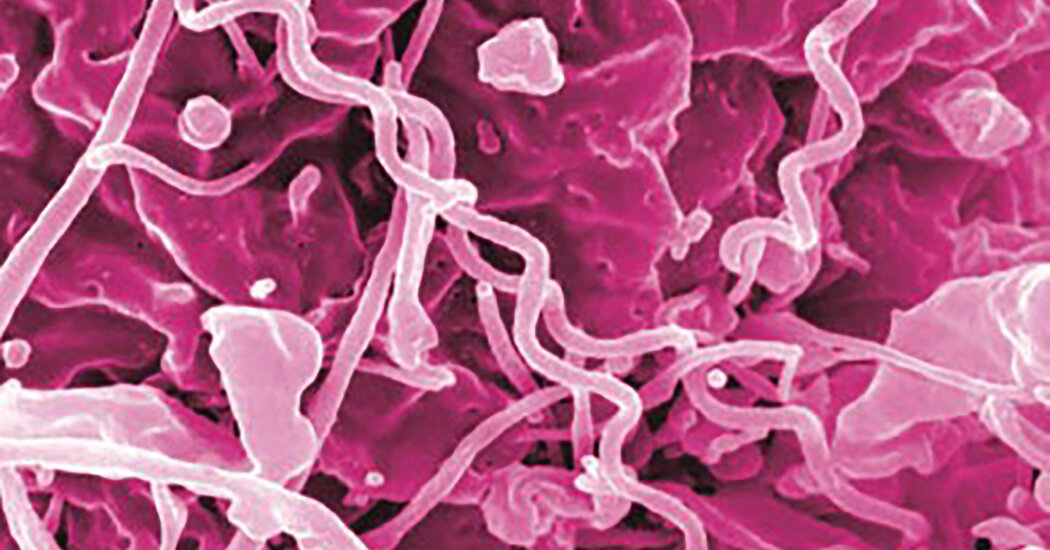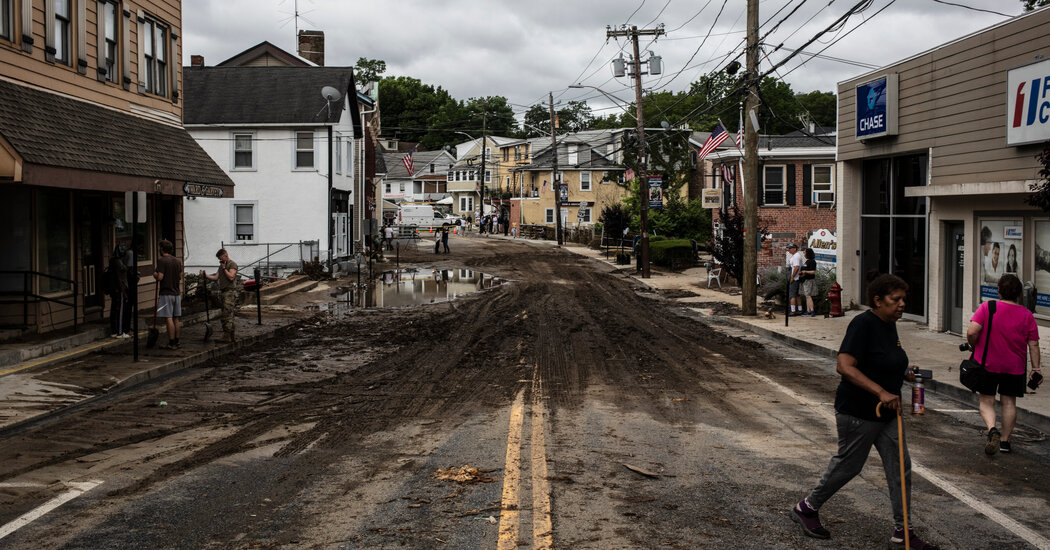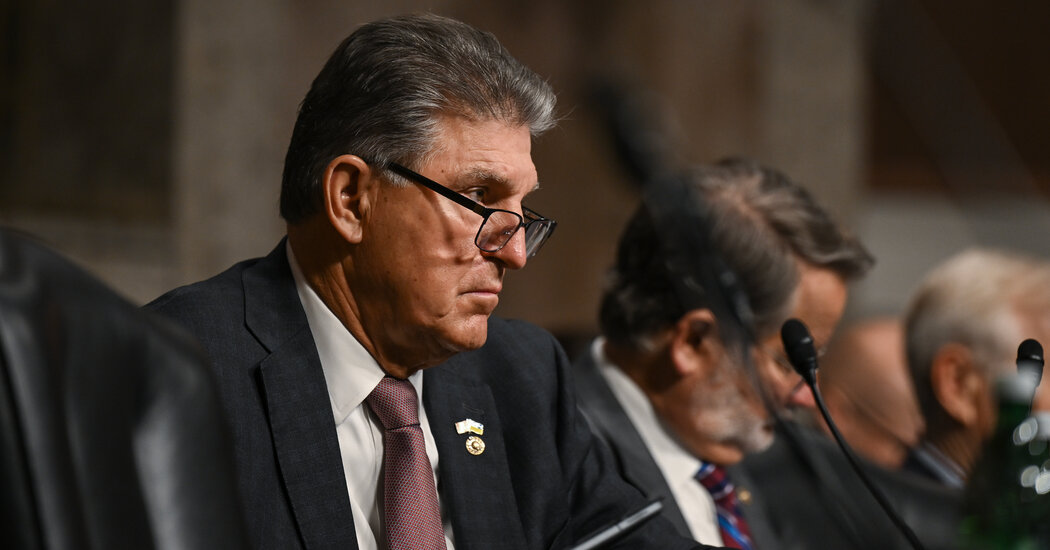Living and Breathing on the Front Line of a Toxic Chemical Zone
Juan López had just returned home from his job supervising the cleaning of giant tanks that hold toxic chemicals produced along the Houston Ship Channel, one of the largest petrochemical complexes in the world.
He was ready to sit down to dinner with his wife, Pamela López, and their four school-age children at their small house across the highway from the plants.
But as the family gathered, the facilities were still burning off chemical emissions, sending clouds of leftover toxics toward their two-bedroom home, hitting them on some days with distinct and worrisome smells — and leaving Mr. López concerned about the health of their children.
“I make good money where I’m at,” he said. “But I always felt like it was only me that was getting exposed, because I am working in the tanks with the chemicals. When the smell comes, all we can really do is try to keep everyone inside. Is that enough? I just don’t know.”
He has reason to worry. Two recent assessments, by the Environmental Protection Agency and city officials in Houston, found that residents were at higher risk of developing leukemia and other cancers than people who lived farther from the chemical plants.
These same worries afflict households in Illinois, Louisiana, West Virginia and other spots around the United States where families live near manufacturing facilities that make or use these cancer-causing chemicals.
“Sacrifice zones — that’s what we call them,” said Ana Parras, a founder of Texas Environmental Justice Advocacy Services, which sued the E.P.A. starting in 2020 to push for tighter rules on toxics. “These areas here are paying the price for the rest of the nation, really.”
After years of only intermittent action by the federal government and opposition from the industry, the Biden administration is racing to impose restrictions on certain toxic air releases of the sort that plague Deer Park, while also moving to ban or restrict some of the most hazardous chemicals entirely.
The proposed measures would significantly cut releases of a number of cancer-causing chemicals from plants in Texas, including four of those across the highway from the López family.
Companies from a variety of industries, including those that produce the substances and those that use them, are pressuring the administration to water down some of the rules, saying the repercussions of a ban or new restrictions could be economically crippling.
Few communities are at greater risk than Deer Park, and few people experience the trade-offs between economic considerations and health more than Mr. López, for whom the petrochemical industry is both the source of his family income and a threat to their health.
Mr. López, 33, did not graduate from high school and is proud of how much he is paid to supervise the cleaning of the chemical tanks, which his crew climbs into and scrubs from the inside, an extremely dangerous job.
But he suggested that the job did not blind him to the risks the plants pose to his family, saying that “just because you help me make a paycheck does not mean you are doing everything right.”
Waves of toxic chemicals drift toward the family home at unpredictable moments, day and night. Mr. López wears protective gear at work. But there are no such measures at the house, where the children ride bikes in the driveway and play with a puppy named Dharma. From the swing set in their backyard, they can see the flares from the nearby plants.
On Friday, a huge fire broke out at one of the petrochemical plants across the highway from their home. “That is a lot of smoke,” Pamela López said in a phone interview, as she looked out at the blaze. “I don’t know exactly what is in the tank that exploded.” The wind at least was blowing east, away from the home. Dismissal from the local public schools continued as normal.
Texas records examined by The New York Times show that toxic releases are happening regularly in the area, sometimes even without notifications to residents.
That includes carcinogens spewed from the OxyVinyls plastics manufacturing plant across the highway when air pollution control equipment temporarily went down before dawn in mid-July, state records show. The discharge included three known or suspected carcinogens that the E.P.A. is cracking down on.
When a tornado touched down in the neighborhood in January, the power went out, disrupting pollution control equipment in at least seven refineries and chemical plants in the area and resulting in the discharge of known toxins that were visible in the form of black clouds of smoke.
Mixed in with these discharges, state records show, were an estimated 32,000 pounds of sulfur dioxide, an air pollutant that can cause respiratory ailments, as well as smaller amounts of 1,3-butadiene and benzene, known carcinogens.
On a Sunday morning in February, a pressure relief valve opened at another OxyVinyls plant, discharging vinyl chloride into the air. That chemical was released after a huge train derailment near East Palestine, Ohio, that month; it was manufactured at the OxyVinyls plant near where the López family lives, rail records show.
In March, an “emission event” at OxyVinyls over five hours on a Wednesday evening released nearly 15,000 pounds of hydrogen chloride, a gas that can irritate the eyes and throat, among more serious ailments.
Other records obtained by The Times show that nearby plants have released into the air over the past two years other chemicals — a kind of who’s who list of the most toxic chemicals in use in the United States — the same substances the Biden administration is preparing to impose new restrictions on.
An analysis prepared by the advocacy group Earthjustice based on federal records shows more than one million pounds of these so-called high-priority chemicals, including the carcinogens 1,3-butadiene and formaldehyde, have been released over the past decade in the Deer Park neighborhood.
“Not enough people have enough information,” Mr. López said as he arrived home from work, his children circling around on roller skates and a Spiderman ride-on car. “And they don’t know what they’re being exposed to.”
The regular discharges of toxics have left Mr. and Ms. López wondering if the headaches their oldest daughter, Mahliyah Angelie, has experienced (her teacher called recently to report the persistent problem) might be related to the chemicals.
“Should I take another Tylenol?” Mahliyah, 9, asked her mother. She picked up the nearly empty, family-size bottle on the kitchen counter, and her mother nodded nervously.
One goal of the policies the E.P.A. has recently issued or proposed is to remove a loophole that allows toxic chemical discharges during bad storms, plant malfunctions or when they start up or shut down. The agency will separately require, for the first time, that many of these chemical plants monitor air at their fence lines for six key toxics to ensure they are complying with the rules.
“Communities don’t stop breathing during a hurricane,” Michael S. Regan, the E.P.A. administrator, said last month, standing in front of a plastics plant in St. John the Baptist Parish, in Louisiana, as he announced some of the proposed rules.
In the Houston area, many neighbors of the López family in Deer Park work at the plants or have relatives who do. They say they appreciate all that the corporations have done for the community, such as donating money to expand playgrounds and supporting local schools.
Candace Dray, 43, has lived in the Deer Park area all her life. She remembers growing up when her father used to play football outside with the neighbors, the night sky lit up by flares from the plants. Her son Joshua Howard Jr., 6, still plays in the front yard, jumping into mud puddles with his boots on, as the flares burn on the other side of the highway.
“I’ve got the V.I.P. seats, absolutely,” Ms. Dray joked, looking across from her house at the endless line of plants that turn crude oil into gasoline and produce chemicals needed to manufacture plastics and sanitize drinking water. “But these plants have to be somewhere. Somebody has got to do the work. You have to have these products.”
But the threats are at times overwhelming. A fire in March 2019 spread to almost a dozen chemical tanks, forming a plume of smoke that lingered over the area for three days and prompting a formal shelter-in-place warning from the local authorities. Hundreds of thousands of gallons of hazardous waste spilled on the ground and leaked into the water.
A recent study by the E.P.A., the first of its kind by the agency, concluded that about 100,000 people who live within six miles of chemical plants it is cracking down on — mostly in Texas and Louisiana — have an elevated risk of cancer.
In Houston, a separate study found elevated levels of formaldehyde, which is formed as different toxic chemicals from many sources mix in the air. The highest concentrations were picked up at an air monitor north of where the López family lives. People living nearby face an increased risk of developing cancer if the levels persist, according to the Houston Health Department.
Another study by the city’s health department and the University of Texas School of Public Health said data on actual cases of childhood lymphoma showed a “56 percent increased risk of acute lymphocytic leukemia among children living within two miles” of the Houston Ship Channel, compared with those who were at least 10 miles away.
The research, starting more than a decade ago, shows that those at greatest risk are typically Black and Latino residents of Houston in lower-income neighborhoods like Galena Park, just east of the Lópezes.
The chemical industry has funded its own health survey, including one asserting that there are no elevated levels of cancer in Deer Park. “Cancer is common and complicated,” said a presentation in 2021 by an industry-funded group in Deer Park, adding that “one in three people will be diagnosed with cancer in their lifetime” regardless of nearby chemical plants and that obesity is a major factor in many types of cancer.
The E.P.A.’s estimates of cancer risk, a separate letter from the American Chemistry Council says, rely on “a number of scientific, statistical and technical errors” that most likely exaggerate the health threat. A spokeswoman for the chemistry council added that since the 1980s, total toxic chemical releases have dropped in the United States, even as the population has grown.
In interviews, chemical plant managers and corporate executives stressed the importance of the industry to the United States and said they were confident they were doing a responsible job of protecting the public. The flares, for example, which light up the sky with an ominous glare, are intended to efficiently burn off toxins at high temperatures as they are vented, they said.
“We don’t make money when we buy a raw material and then you leak it into the atmosphere or you burn it at the end of a flare,” said Peter R. Huntsman, the chief executive of Huntsman, one of the world’s largest chemical companies. It has a plant in Houston as well as one north of the city, near the headquarters.
But E.P.A. documents show these flares often fail to completely burn off toxins, meaning chemical residues are sent drifting toward homes, trends that have been meticulously documented by an extensive network of air monitors set up in the Houston area.
The Texas Commission on Environmental Quality, the state’s lead regulator, rarely issues fines to companies for the episodes. Ken Paxton, the state attorney general, sued the Biden administration this year when it moved to try to force Texas to tighten its air pollution enforcement efforts, saying that the rules “do immeasurable harm to our state sovereignty and to numerous industries across Texas.”
The Times asked executives at five Houston-area petrochemical plants — run by Exxon Mobil, OxyChem, LyondellBasell, Olin Corporation and Westlake — for permission to visit to learn more about efforts to curb releases of toxic chemicals. Each of the companies declined.
After The Times reached out to the American Chemistry Council to ask for further access, Huntsman allowed a reporter and a photographer to visit the company’s headquarters in suburban Houston, as well as a chemical plant in Conroe, about an hour north of Houston, in a wooded area far from homes.
Brittany Benko, the company’s senior vice president for environmental safety, walked through Huntsman’s health and safety practices, including required respirators and other equipment for certain employees, as well as medical monitoring for those who work particularly close to toxic chemicals.
“We want to protect our workers, and we want to protect the public,” Ms. Benko said in a statement, echoing comments that an OxyChem executive made to The Times.
Mr. Huntsman said that if air monitoring in Houston had documented elevated levels of certain toxics like formaldehyde, then the plants must work to identify the source and curb emissions that were contributing to the problem.
“We ought to be digging into the source of it,” he said from his office on the ninth floor of the company’s headquarters in The Woodlands, Texas, miles from any major chemical plants. “It should not be something that any industry should brush off.”
Three days after the visit by a Times reporter, the Huntsman plant in Conroe had an unexpected “emissions event” that released more than 11,000 pounds of hazardous chemicals, state records show, including a small amount of propylene oxide, a “probable human carcinogen” used to make polyurethane foams. In its report to the state, the company said it was confident that no one was harmed.


